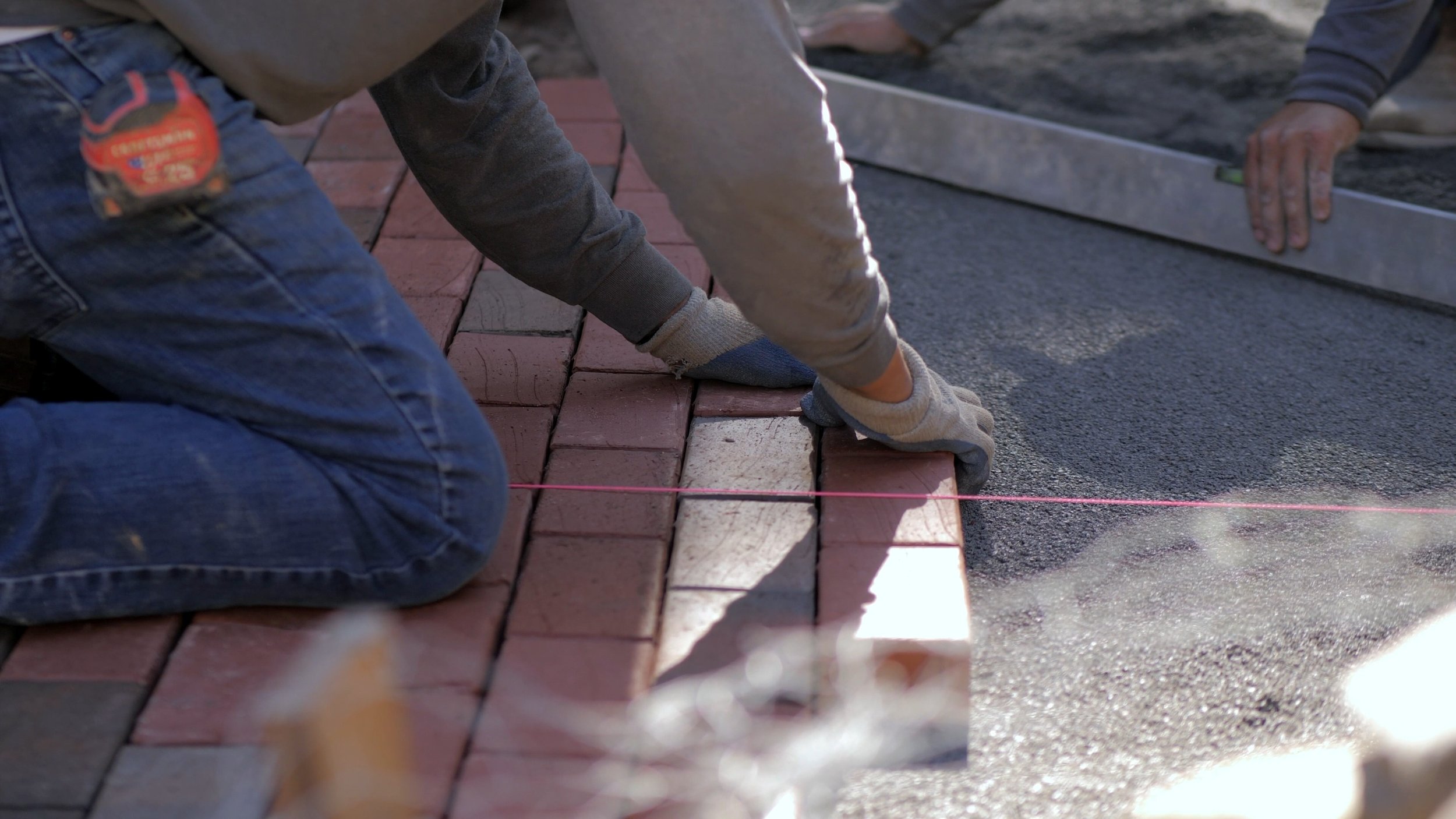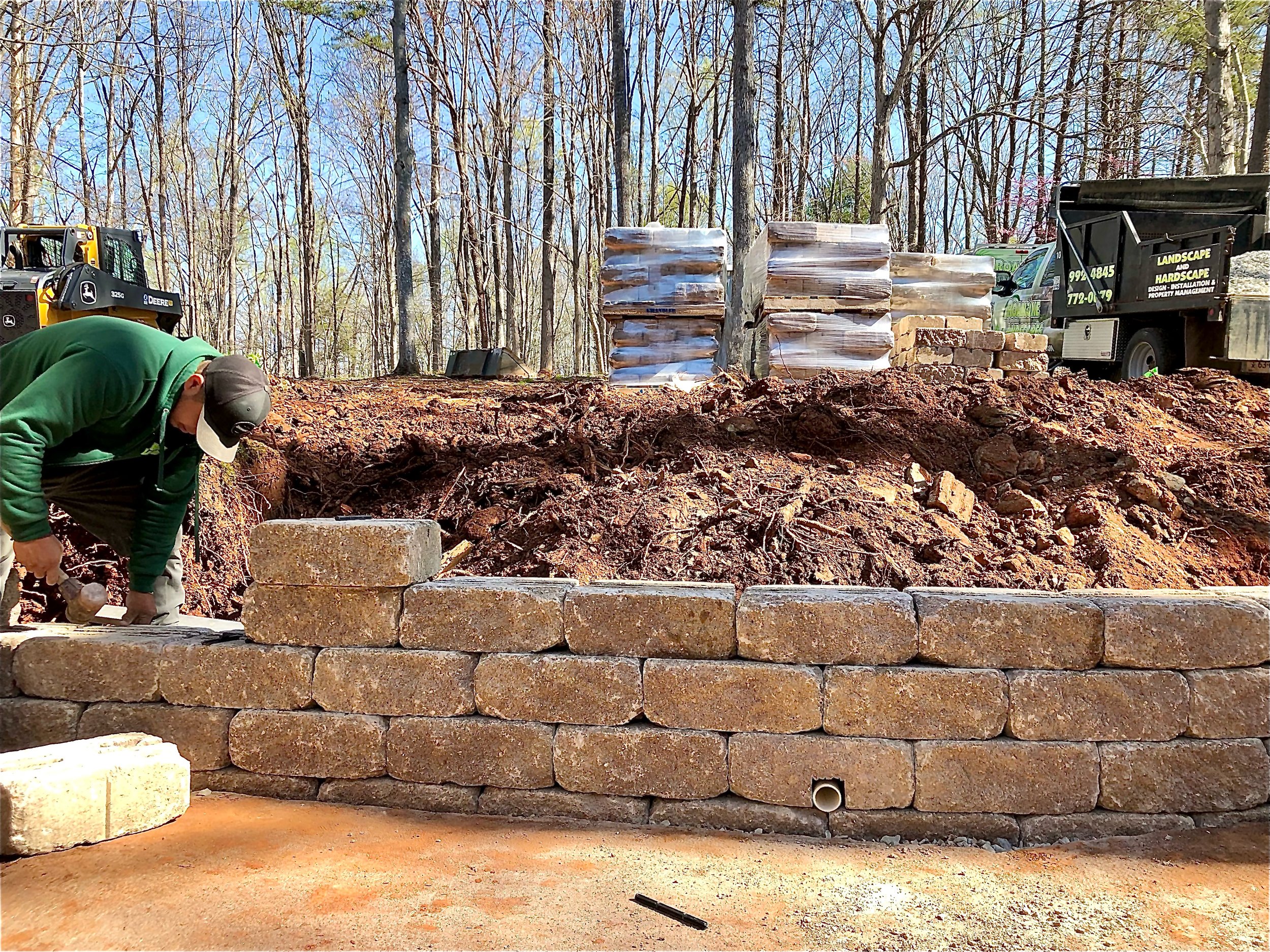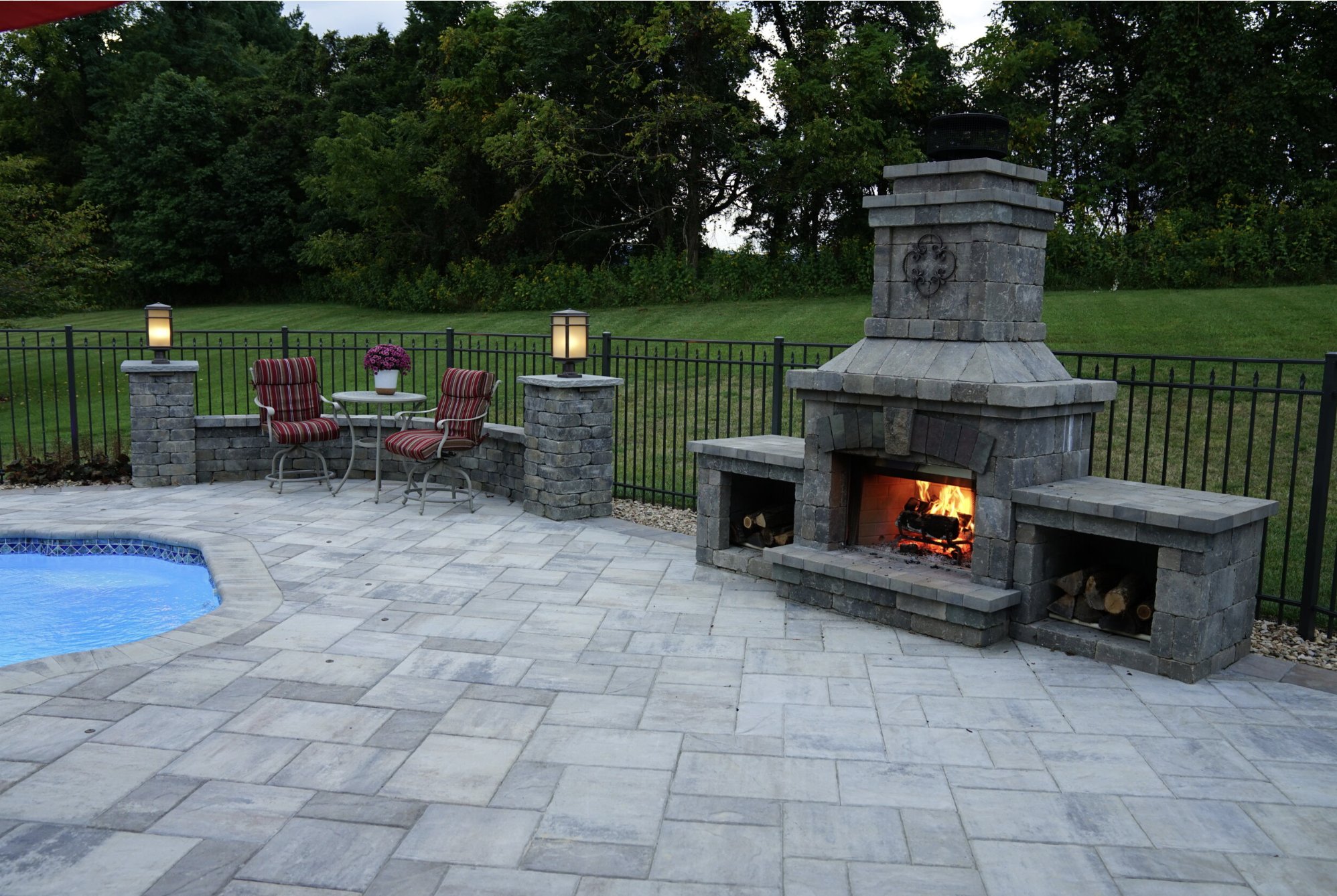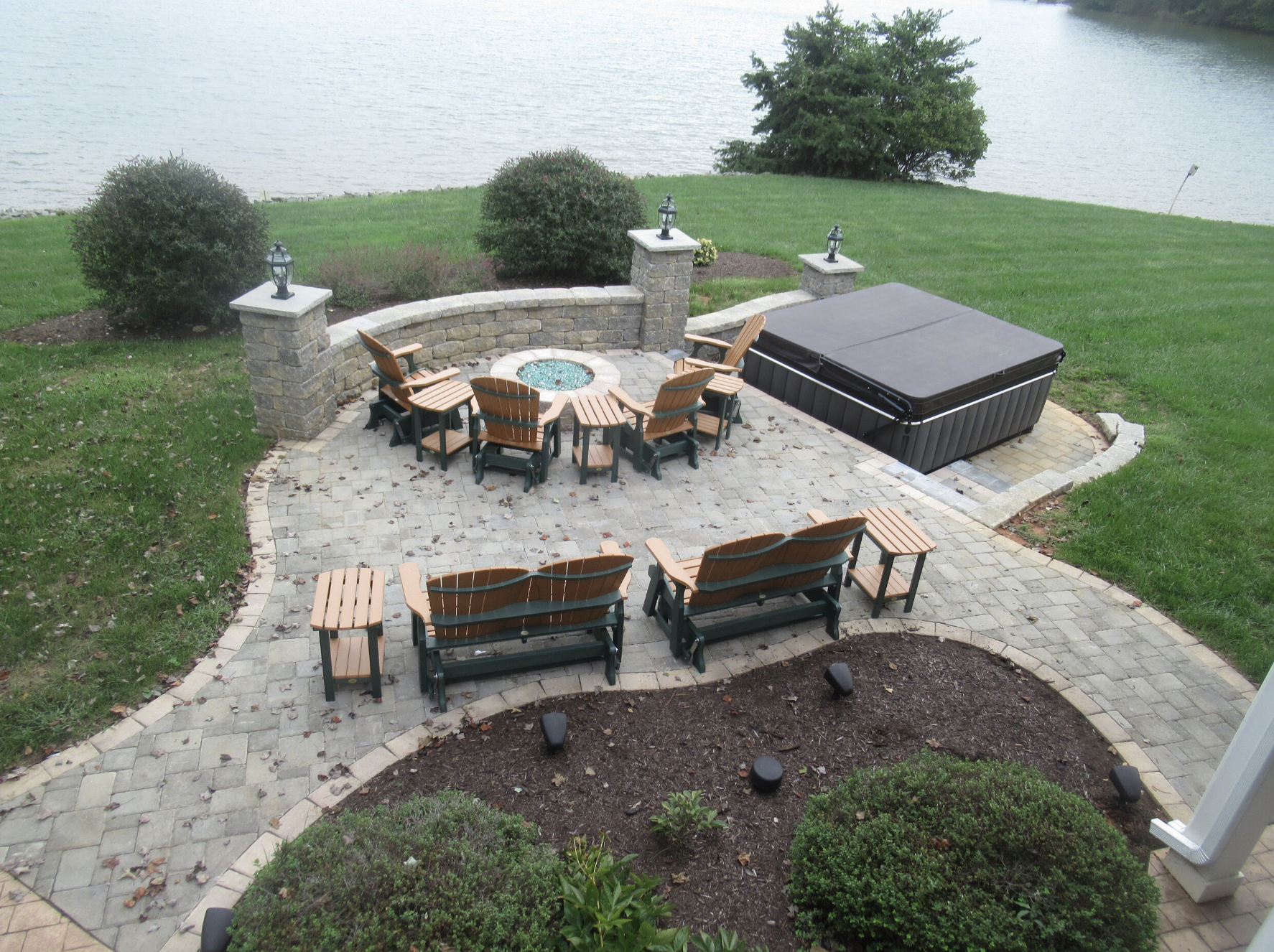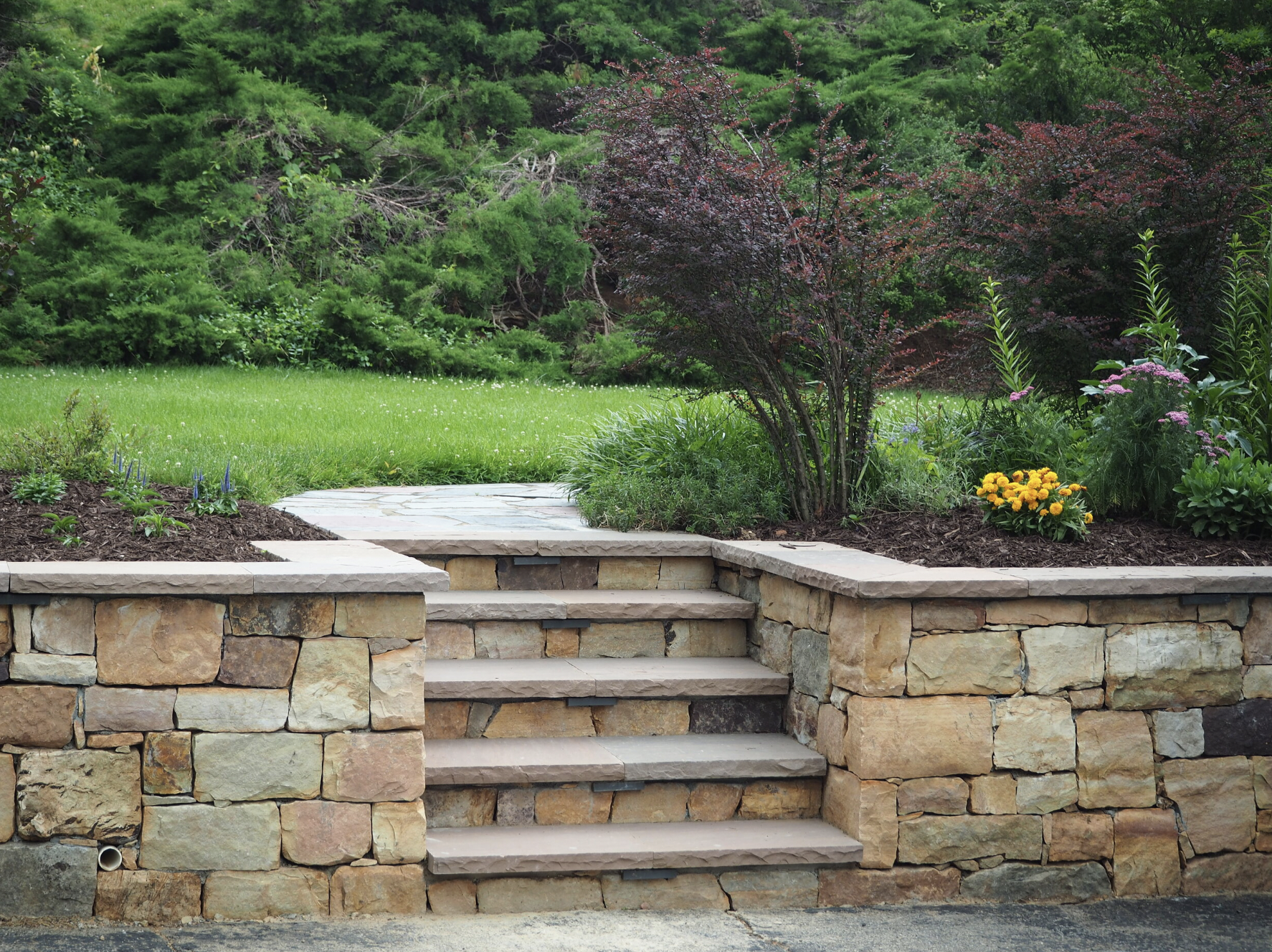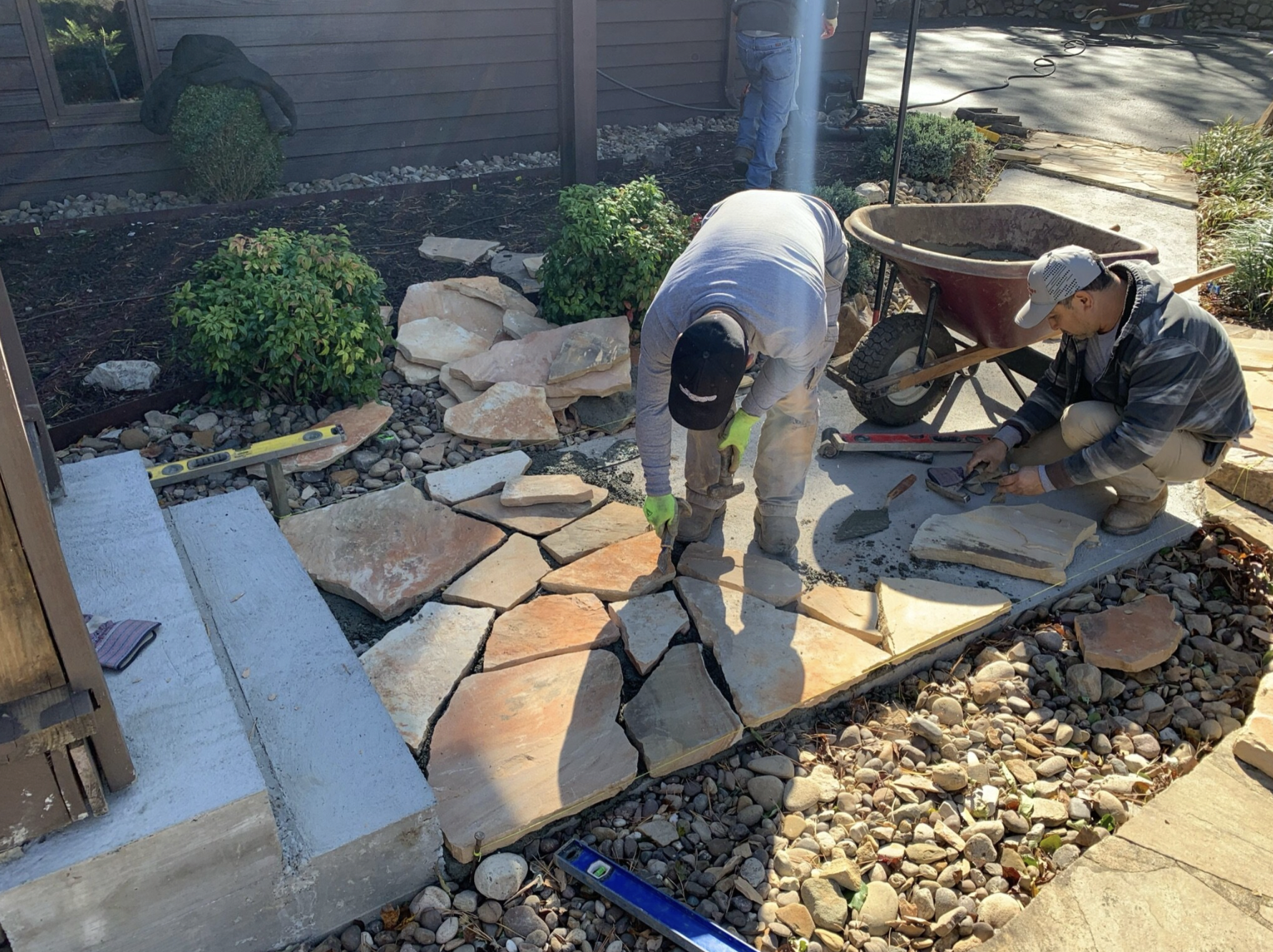The Age Old Question: Pavers or Concrete?
Duking it out since 6000 BC both pavers and concrete have the capability to stand up against the test of time. Look no further than the artifacts of Nabataea's early concrete paths and structures or the Roman's road system made of the first segmental pavement, both still preserved thousands of years later. It's no wonder these favorite patio, pathway, driveway, and pool surround options make formidable opponents when it comes time to pick materials for your next outdoor project. We'll attempt to bring more information into the conversation, hopefully helping you and your family pick the right supplies for the job.
To start, let's take a good long look at the paver. Paver's come in virtually any design, size, or color you could think of, making this building material a great choice for custom design projects. If you're looking for a showstopper, whether to distract from your frequent bbq busts or to create the best morning coffee spot in the Blue Ridge Mountains, you'll have a better chance of finding it in one of the many options a paver affords. Before we go awarding the paver the "Best Garden Invention Since Roman Aqueducts" let's get to what you really came for, the paver's dirty secrets. When stacked against concrete (which, yes, we absolutely do stack pavers against.. or beside, concrete on a daily basis, making us Roanoke's foremost experts on the topic.. of stacking pavers) we see that stamped concrete is about 70% the cost of pavers and takes less time to install by a factor of 1/4. Building with concrete typically means no cuts and minor excavation. For larger spaces concrete's low labor cost might be all the reason you need to send those pavers stacking.
Concrete has its fair share of blemishes... and we do mean blemishes. Concrete is known to crack.
Pavers can withstand approximately four times the weight that concrete can tolerate. So if you're planning a project like a driveway and you don't want to have to look at cracks or think about replacing or repairing large sections anytime soon, consider the paver.
When it comes to transitions, the paver outshines concrete both aesthetically and functionally. If you're building outdoor features such as kitchens, fine features, pools, and fountains or ponds, you'll prefer the look and flexibility of a paver. For example, if you’re adding curved pathways to blend naturally with your terrain or changing elevation from one area to another, pavers give you the ability to dream big. While concrete doesn't bring flexibility to the table, it sure does bring the heat. With all the additional mass of concrete (poured concrete is anywhere from 4-5 inches thick) there's plenty of heat absorption happening during the day. The paver is typically 60 mm, half the depth of poured concrete, and sits on a bed of sand helping to keep your pathways, patios, and driveways cool. Consider using concrete in predominantly shaded areas.
In our opinion, the largest drawback of concrete is that you can’t easily gain access to what’s underneath.
Individual pavers or groups of pavers can be easily removed to address any problems that arise from below, like water or gas lines, or say you’d like to bring water or electricity out to an area but you’re contending with poured concrete- that means heavy excavation. Pavers can be put back into place without dramatically changing the look of the surface or requiring an excavation team.
All in all, we’re in favor of the paver for most jobs. Concrete beats pavers in price, but pavers provide a professional finished job with flexibility, countless design options, and room for growth.
~ Roanoke Landscapes 🍃

